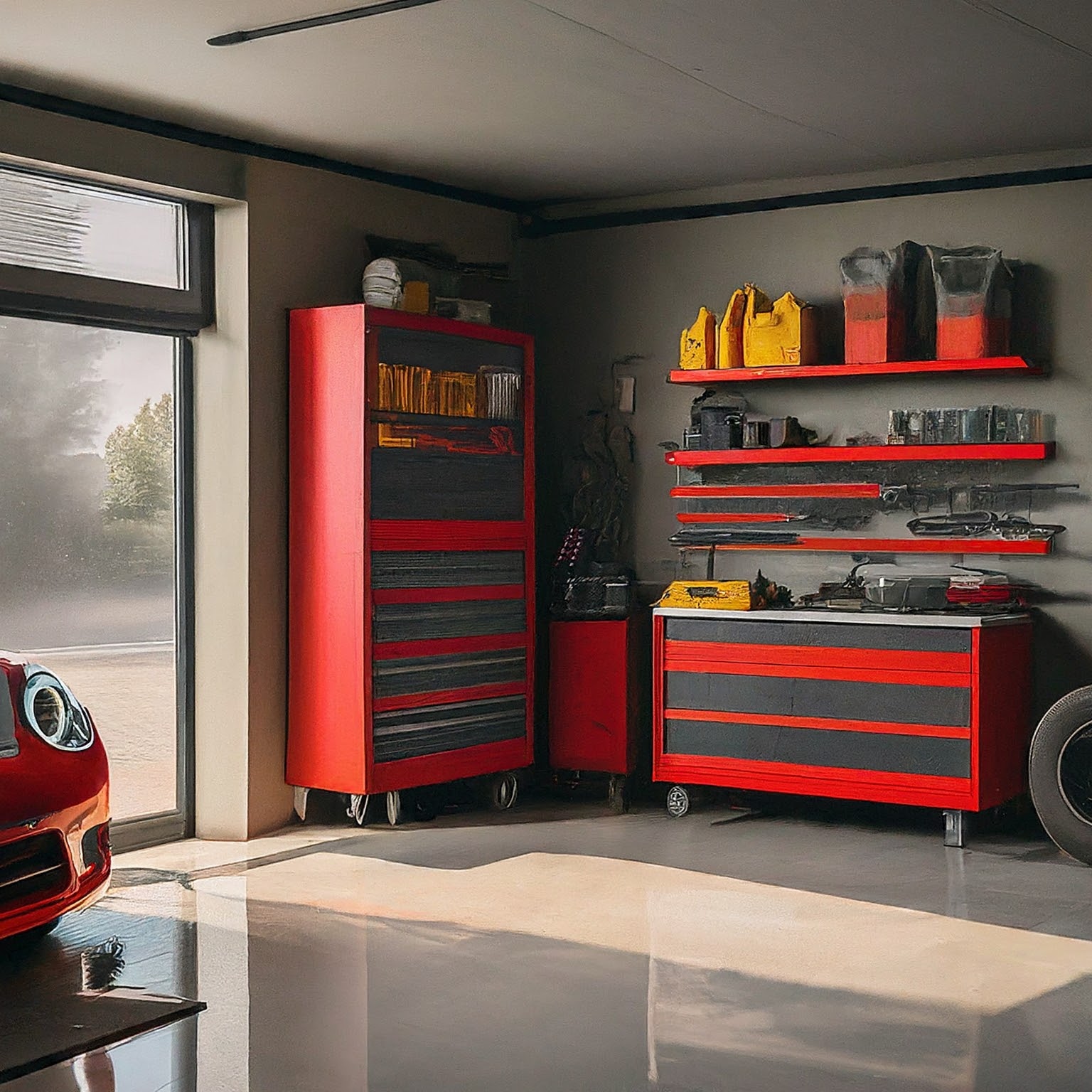Epoxy garage flooring has surged in popularity for homeowners and businesses alike. Known for its glossy finish and sleek appearance, epoxy isn’t just a visual upgrade—it’s a practical solution for long-lasting floors. The true allure of epoxy flooring, however, lies in its unmatched durability. Resistant to wear and tear, chemical spills, and heavy loads, epoxy floors offer a fortified surface capable of withstanding even the harshest environments.
Understanding Epoxy Flooring
Epoxy flooring is a composite material formed by the chemical reaction between resin and hardener. This reaction creates a rigid plastic material that bonds to the surface of a concrete floor, forming a seamless and protective layer. Epoxy’s high-performance capabilities stem from this powerful bond, which shields the underlying concrete from cracks, moisture, and damage.
The installation process begins with thorough surface preparation, followed by the application of multiple epoxy layers. Each layer is allowed to cure, hardening into a durable surface that can handle significant pressure. Depending on the specific needs of the garage—whether it’s for residential or commercial use—epoxy flooring can be tailored in thickness and finishes, ensuring optimal functionality for any space.
Factors that Affect Durability
For epoxy flooring to perform at its peak, several critical factors must be addressed during installation.
Surface preparation is perhaps the most crucial. A dirty or damaged concrete base will compromise the epoxy’s ability to adhere, leading to peeling or bubbling. Proper cleaning, grinding, and repair of cracks or imperfections ensures a smooth application surface, which is essential for long-term durability.
Equally important is proper application. Applying even layers under the right conditions ensures the epoxy bonds correctly. Epoxy requires time to cure—a process that should not be rushed. Installing under suboptimal conditions—whether too humid, too cold, or too hot—can lead to weaker bonds, reducing the lifespan of the floor.
Lastly, environmental factors play a significant role. Temperature, humidity, and airflow during application and curing must be carefully managed. High humidity, for instance, can lead to excess moisture in the epoxy, weakening its structure. Temperature fluctuations can cause premature curing or slow down the hardening process, both of which can negatively impact durability.
Enhancing Epoxy Flooring Durability
Durability doesn’t end with the installation process—there are several ways to further enhance the lifespan of epoxy flooring. One effective strategy is applying protective topcoats and sealants. A topcoat can provide additional resistance to abrasions and chemical spills, making it a worthy investment for garages that see heavy use.
Choosing the right thickness of the epoxy is also key. High-traffic areas benefit from a thicker application, which provides greater protection against impacts from tools, equipment, and vehicles. A thin layer, though attractive in cost, may not provide sufficient protection in a busy environment, leading to quicker wear.
For those concerned with both safety and durability, additives can be introduced. For example, slip-resistant materials can be mixed into the epoxy, adding extra grip to the floor. Other additives can increase the floor’s resistance to heat or chemicals, reinforcing its structural integrity and overall strength.
Maintenance Tips
Once installed, maintaining epoxy floors is relatively straightforward. To preserve the glossy finish and durability, regular cleaning is essential. Sweeping away debris and using a gentle mop with mild detergent helps keep the floor spotless without damaging its surface. Avoid using harsh chemicals, as they can erode the protective layers of the epoxy, diminishing its longevity.
Using abrasive tools or cleaners can also lead to scratches or wear, reducing the floor’s aesthetic appeal over time. Instead, opt for non-abrasive cleaning methods and soft-bristle brushes to handle stubborn stains. Additionally, it’s important to act quickly when spills occur, especially oil or chemical-based liquids. Immediate cleanup prevents these substances from seeping into the surface, preserving the integrity of the epoxy coating.
In the event of minor damage, such as chips or cracks, handling repairs promptly is key to preventing further deterioration. Small patches can easily be fixed with epoxy touch-up kits, restoring the surface without needing a complete overhaul. Preventing future damage is a matter of vigilance—placing mats or pads under heavy equipment and promptly addressing any spills or leaks will help extend the life of the flooring.
Maximizing the durability of epoxy garage flooring starts with proper installation and continues with consistent care. From meticulous surface preparation to the application of protective coatings and diligent maintenance, each step contributes to a floor that can last for decades. For those seeking a flooring solution that balances aesthetics with strength, epoxy is an investment worth making. Professional installation and regular upkeep are essential to unlocking its full potential—ensuring a durable and resilient floor that will stand the test of time.

